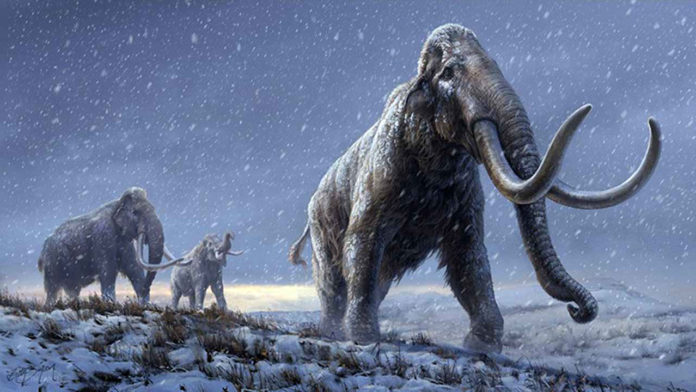For the first time, scientists have managed to sequence and authenticate DNA from million-year-old specimens. Scientists from the Centre for Palaeogenetics in Stockholm were able to sequence DNA from 1.2 million years old mammoth remains- making it the world’s oldest DNA.
Scientists recovered DNA from mammoth teeth buried for 0.7-1.2 million years in the Siberian permafrost. Only minute amounts of DNA remained in the samples, and that the DNA was degraded into tiny fragments.
By using geological data and a molecular clock, scientists determined the age of specimens. Both analyses suggested that the specimen sample was more than one million years old and belonged to a previously unknown genetic lineage of a mammoth.
Based on the locality it was found, scientists think it was the Krestovka mammoth. The results show that the Krestovka mammoth diverged from other Siberian mammoths more than two million years ago.
Senior author Love Dalén, a Professor of evolutionary genetics at the Centre for Palaeogenetics in Stockholm, said, “This DNA is ancient. The samples are a thousand times older than Viking remains and even pre-date the existence of humans and Neanderthals.”
The study’s lead author, Tom van der Valk said, “This came as a complete surprise to us. All previous studies have indicated that there were only one species of a mammoth in Siberia at that point in time, called the steppe mammoth. But our DNA analyses now show that there were two different genetic lineages, which we here refer to as the Adycha mammoth and the Krestovka mammoth. We can’t say for sure yet, but we think these may represent two different species.”
Scientists also suggest that mammoths belonged to the Krestovka lineage that colonized North America some 1.5 million years ago. The analyses show that the Columbian mammoth that inhabited North America during the last ice age was a hybrid. Roughly half of its genome came from the Krestovka lineage and the other half from the woolly mammoth.
Co-lead author Patrícia Pečnerová said, “This is an important discovery. It appears that the Columbian mammoth, one of the most iconic Ice Age species of North America, evolved through a hybridization that took place approximately 420 thousand years ago.”
Scientists collected three types of samples- two of the specimens are more than one million years old, whereas the third is roughly 700 thousand years old and represents one of the earliest known woolly mammoths. The second million-year-old genome, from the Adycha mammoth, appears to have been ancestral to the woolly mammoth.
By comparing the genome of the Adycha mammoth with the genome from one of the earliest known woolly mammoths, they determined how mammoths became adapted to life in cold environments and to what extent these adaptations evolved during the speciation process.
Co-lead author David Díez-del-Molino said, “To be able to trace genetic changes across a speciation event is unique. Our analyses show that most cold adaptations were present already in the ancestor of the woolly mammoth, and we find no evidence that natural selection was faster during the speciation process.“
The study paves the way towards studies on other species. As many species expanded across the globe about one million years ago, that period is believed as a period of major changes in climate and sea levels, as well as the last time that Earth’s magnetic poles changed places. That’s why scientists think that genetic analyses on this time scale have great potential to explore a wide range of scientific questions.
Anders Götherström, a professor in molecular archaeology and joint research leader at the Centre for Palaeogenetics, said, “One of the big questions now is how far back in time we can go. We haven’t reached the limit yet. An educated guess would be that we could recover DNA that is two million years old and possibly go even as far back as 2.6 million. Before that, there was no permafrost where ancient DNA could have been preserved.”
Journal Reference:
- Million-year-old DNA sheds light on the genomic history of mammoths, Nature (2021). DOI: 10.1038/s41586-021-03224-9
